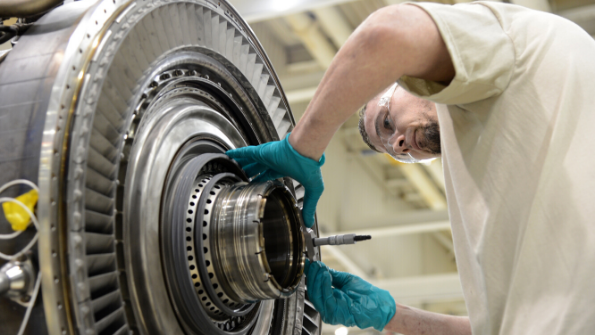Two Tax Credits Help Aerospace Employers Attract, Retain Engineers

Pandemic or not, attracting and retaining top-flight engineers is a challenge for aviation and aerospace companies. Two tax credits in Oklahoma give industry employers a jet-propelled boost.
Aerospace is critical to the state’s economy, employing more than 120,000 people and generating a $44 billion economic impact, much of that concentrated in the 10-county Greater Oklahoma City Region. Protecting and accelerating that growth has been a top priority, and an innovative strategy was born out of a top pain point of private industry: talent.
The Aerospace Engineer Workforce Tax Credit program provides aerospace companies up to a $12,500 annual state tax credit for each engineer hired and employed for up to five years within Oklahoma. As an added benefit, the qualifying engineer, who must have a degree in engineering from programs accredited by the Engineering Accreditation Commission of the Accreditation Board for Engineering and Technology, also qualifies for up to a $5,000 state tax credit annually for a maximum of five years. The engineers don't have to be aerospace-specific engineers, but they must be employed by an aerospace company. Aside from the direct tax credit to both parties, the incentive has become a valuable recruitment tool for firms with an operation in the state.
"The engineering tax credits were a significant contributing factor in decisions to expand the Boeing presence in Oklahoma. The Boeing Oklahoma City site has been the fastest growing site in the enterprise the last few years," says Steve Hendrickson, director of government operations for Boeing. "This credit is unique in the nation and places Oklahoma at a competitive advantage."
Approved in 2009 and later extended in 2018, the credit has generated an estimated economic impact of $1.5 billion to $2 billion for the state, according to a report in The Norman Transcript. The paper also notes that the state tax commission received well over 2,000 tax returns claiming the credit in 2017 alone. The current iteration of the credit lasts through at least 2026.

It has been so successful, a related state program, the Software/Cybersecurity Workforce Tax Credit, was launched in 2019 and also has implications for aerospace employers. It provides a tax credit (up to $2,200 annually) for cybersecurity or software employees who have received a degree from an accredited institution.
The popularity of the aerospace engineer credit—and early buzz about the software/cybersecurity one—is a sign that the industry is continuing its growth throughout the state and in major hubs like Greater Oklahoma City. The region itself employs 36,600 aviation and aerospace workers. It has also added diversity to its large MRO presence by attracting operations for Boeing's weapons systems, Kratos Defense & Security Solutions' unmanned advanced aircraft and, in June, the headquarters of U.S.-Spanish aerospace startup Skydweller Aero, which produces renewably powered aircraft for defense and commercial industries.
"The Oklahoma Aerospace Engineering Tax Credit is a clear statement by public policy makers that aerospace engineers are valued and encouraged to pursue professional development in Oklahoma," Hendrickson says.
The pandemic has undoubtedly created significant headwinds for the industry, but a simple fact remains—attracting and retaining top-flight engineers is a constant priority for innovative firms. Oklahoma's Aerospace Engineer and Software/Cybersecurity Workforce Tax Credits provide a jet-propelled boost in that process.
This article is brought to you by the Greater Oklahoma City Partnership, which works closely with business and community leaders to grow existing industries, recruit new companies and develop an active entrepreneurial environment, resulting in quality job creation and a diverse economy for the 10-county region. To learn more about Greater OKC, visit greateroklahomacity.com.